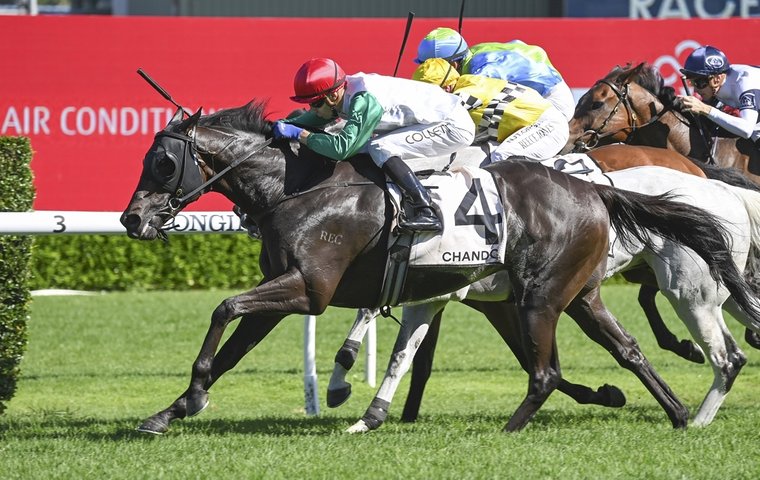
Horses sold out of the Aga’s world-renowned racing and breeding operation have long since left their mark on the international stage, as Julian Muscat reports
Autumn is the season when racing’s bigger players streamline the number of horses they have in training.
For any outfit, culling stock surplus to requirements provokes a sense of foreboding. The prospect of selling a horse that thrives in other hands can be galling, yet for owner/breeders like the Aga Khan, such an outcome is frequently offset by the presence of close relatives on their studs.
In any case, those who consistently sell horses that fail to reward new connections are doing themselves a disservice. Recouping costs is an important directive within the Aga Khan Studs, and such returns would be minimal if the horses sold on faded into anonymity.
Success stories
The chances of that happening are slim. Together with the Abdullah family’s Juddmonte Farms, the Aga Khan’s annual draft of horses in training is always keenly anticipated at the sales.
The first batch for 2023 will be under the hammer at the Arqana Arc Sale at Saint-Cloud on September 30, when the Aga Khan consignment includes Shartash, winner of last year's G2 Railway Stakes at the Curragh for trainer Johnny Murtagh, plus three French winners.
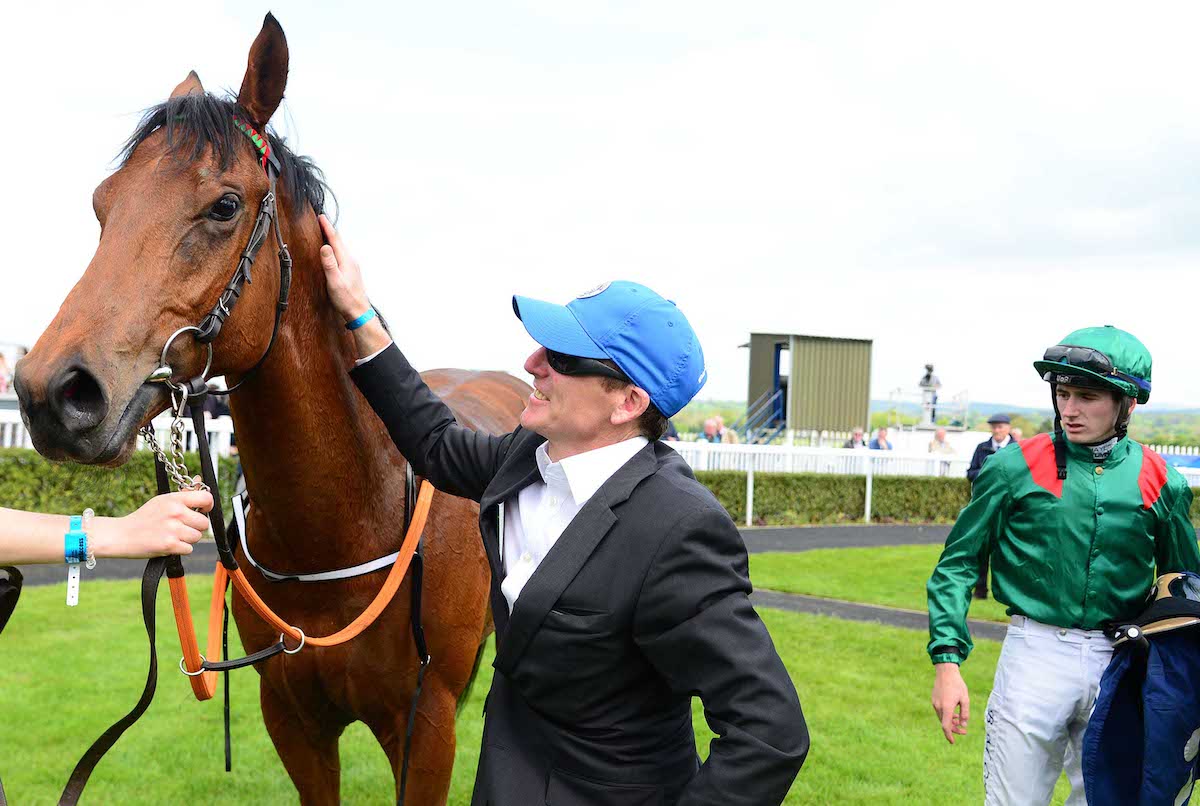 One man’s cast-offs are another man’s opportunity, and there have been plenty of success stories to keep buyers coming back for more.
One man’s cast-offs are another man’s opportunity, and there have been plenty of success stories to keep buyers coming back for more.
The most fertile stomping ground for former bearers of the green-and-red livery these days is Australia. Breeding sound stock is a priority at the Aga Khan Studs; it is also a prerequisite for the fast ground that characterises racing in that country.
“The Aga Khan consistently breeds his mares to sound stallions, so that’s obviously important,” says bloodstock agent Oliver Gaisford-St. Lawrence, who bought Hazariya, subsequently dam of Derby winner Harzand, from the Aga Khan Studs in 2014. “On the whole you can be confident you are not buying something fragile. You know these horses will keep going for you.”
But there’s another aspect at play. With the Australasian breeding industry having gravitated headlong towards precocious speed over the last three decades, fewer domestic horses are now bred to excel at distances beyond one mile. Competition in that domain has thus been diluted.
Conversely, however, the programme for stakes races at one mile and beyond in Australia is extremely lucrative. Some of the Aga Khan long-established female lines incline towards stamina, which makes them ideally suited to the task.
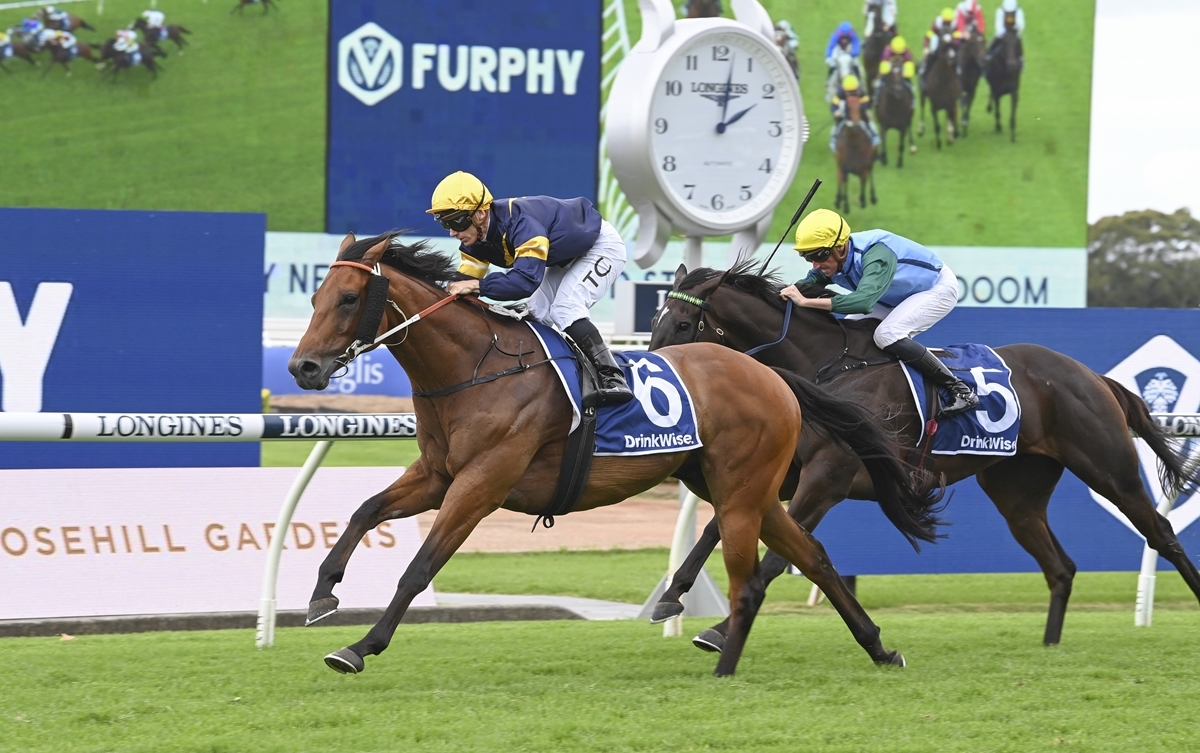 In the first six months of 2023, former Aga Khan horses sold on to other owners – either privately or at public auction – racked up four Group wins in Australia, and were placed in three more. Last year they won three Group races and placed in five others.
In the first six months of 2023, former Aga Khan horses sold on to other owners – either privately or at public auction – racked up four Group wins in Australia, and were placed in three more. Last year they won three Group races and placed in five others.
Dual G3 winner
The most successful of them was Diamil. Winner of the G3 Summer Cup in December and G3 JRA Plate in April, both at Randwick, the son of Awtaad was sold in July 2021 after just four starts in Ireland.
He made two more for Ralph Beckett in England, winning the second of them at Goodwood, before his transfer to John O’Shea’s Australian stable towards the end of that year.
Many of the Aga Khan’s horses are sold as back-end three-year-olds with few miles on the clock. The fact that they are open to improvement adds to their allure. Kalapour, winner of the G3 JRA Chairman’s Handicap at Doomben in May, was sold out of Mick Halford’s Irish stable after just four starts.
Likewise Zeyrek, winner of the G3 Neville Sellwood Stakes in March, who made four starts in France for Alain de Royer-Dupre.
“The Aga Khan’s horses tend to have been sent to trainers who give them time,” Gaisford-St. Lawrence says. “They are not over-raced, and if they are not meeting the Aga Khan’s high expectations, they are happy to move them along.
“There is always something in the tank,” he continues. “From a buyer’s perspective, you look at their profiles and you can’t help thinking there is something there for you. That puts a premium on their value, because the lemon hasn’t been squeezed dry, and the Aga Khan doesn’t seem to mind if they have good careers afterwards. In fact, I think his organisation embraces it, knowing that when they are selling next time, the horses will fetch good prices.”
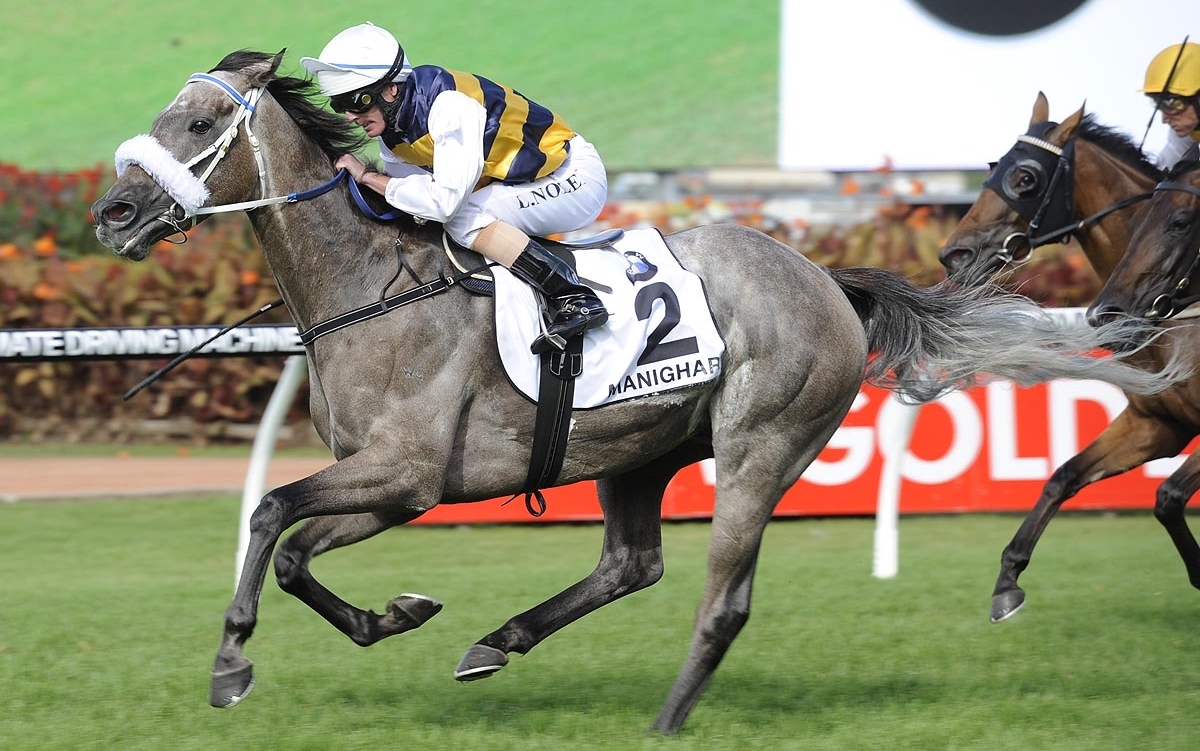 Australia has been a happy hunting ground for the Aga Khan’s former horses since the likes of Melbourne Cup third Mourilyan, Mourayan and Manighar advertised their merits from 2009.
Australia has been a happy hunting ground for the Aga Khan’s former horses since the likes of Melbourne Cup third Mourilyan, Mourayan and Manighar advertised their merits from 2009.
Poster child
The latter pair were both G1 winners, with well-travelled Manighar something of a poster child for the Aga Khan’s alumni register via a G1 hat-trick in Australia in the autumn of 2012, when he won the Darley Australian Cup at Flemington and both the Ranvet and BMW in Sydney for Black Caviar’s trainer Peter Moody.
Formerly trained by both Alain de Royer-Dupre and Luca Cumani, Manighar was six by the time of his Australian exploits – and the grey gelding’s career continued for another couple of seasons, finally drawing to a conclusion in North America in December 2014.
Outside Australia, further success has been reaped across the globe by such as G2 winner Devamani (USA), Singspiel Stakes winner Shahroze (Canada), G1-placed Dibayani (Hong Kong) and Group-placed Shelir (Dubai) – while in Europe leading stayer Tashkhan, sold at Goffs in 2020, has been placed in several top long-distance contests.
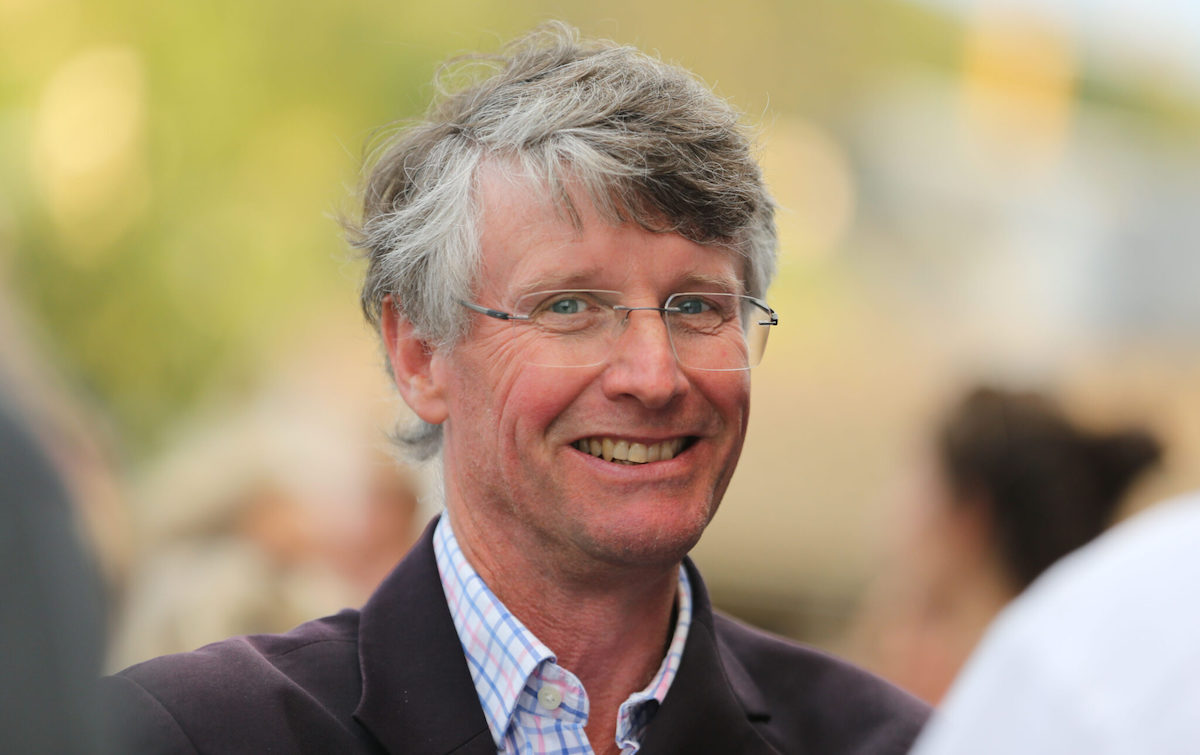 “Australia has provided big opportunities for the last 15 years but now the Middle East is getting stronger,” says Gaisford-St. Lawrence.
“Australia has provided big opportunities for the last 15 years but now the Middle East is getting stronger,” says Gaisford-St. Lawrence.
“The 8-12 furlong horses the Aga Khan likes to breed are ideal for the Middle East because they frequently make up into good four- and five-year-olds.”
All of which have made Aga Khan-bred horses in demand. Many ended up running over hurdles with conspicuous success throughout the 1980s and 1990s in Britain and Ireland. Now, however, many jumps owners have been priced out.
Superior pedigree
Success stories have also been written by horsemen closer to home. Any Aga Khan-bred filly off the racetrack invariably comes with a superior pedigree. Sonaiyla was a case in point when she was bought by Ennistown Stud for €110,000 in 2019 as the winner of two ordinary races in Ireland.
On her transfer to Paddy Twomey’s stable in 2020 Sonaiyla won a Listed race first time out and finished third in the G1 Flying Five two starts later. Ennistown Stud cashed her in at the year’s end, when Sonaiyla was bought for 900,000gns by Moyglare Stud – for whom she won the G3 Ballyogan Stakes, again from Twomey’s stable, the following season.
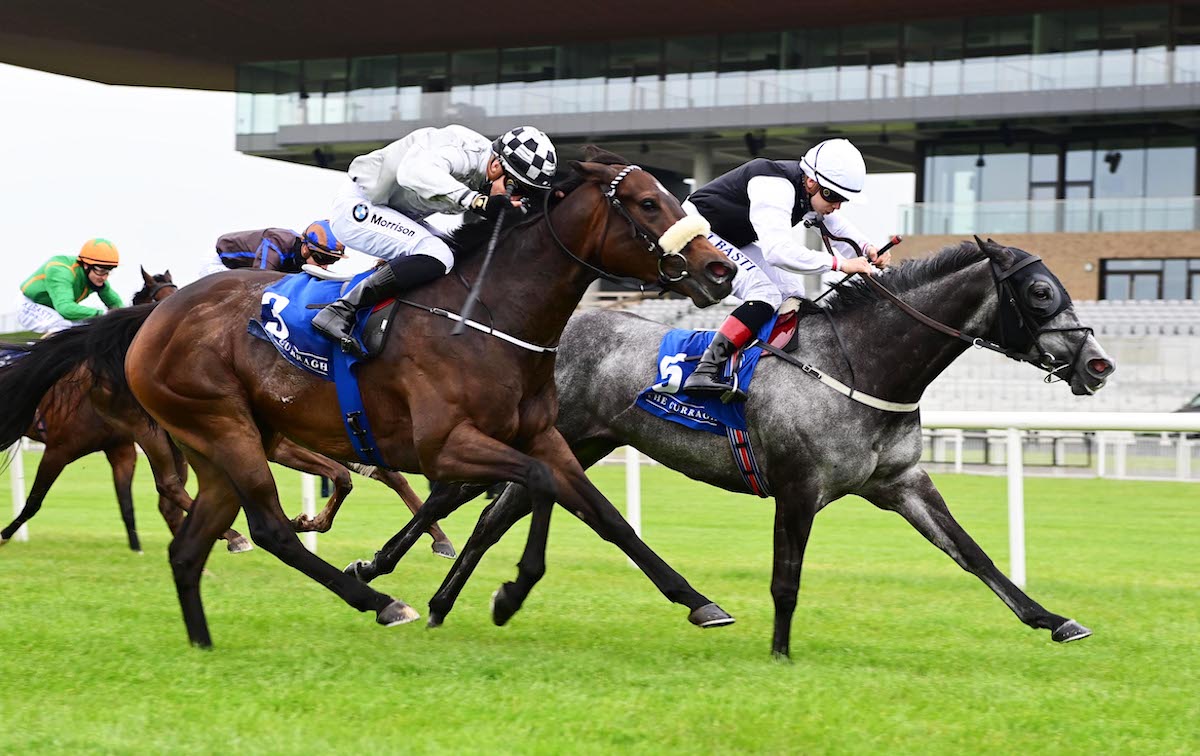 The esteem in which Moyglare holds Sonaiyla is self-evident: her first foal is a colt by Frankel and she is back in-foal to the same sire.
The esteem in which Moyglare holds Sonaiyla is self-evident: her first foal is a colt by Frankel and she is back in-foal to the same sire.
“We were lucky with Sonaiyla,” Twomey recalled. “She was a well-bred filly with some decent form when we saw her at the sale and we were delighted to be able to buy her. She did everybody a good turn.”
That, in a nutshell, is the lure. There is always the prospect of cashing a profit if horses sold by the Aga Khan Studs do well for their new connections. The essence of a good deal gives both parties the opportunity to prosper.
• Visit the Aga Khan Studs website
Heightened international interest offers cause for optimism ahead of Ireland’s major yearling sales
Family affair: interview with Simon Crisford after first G1 triumph in partnership with his son Ed
View the latest TRC Global Rankings for horses / jockeys / trainers / sires


